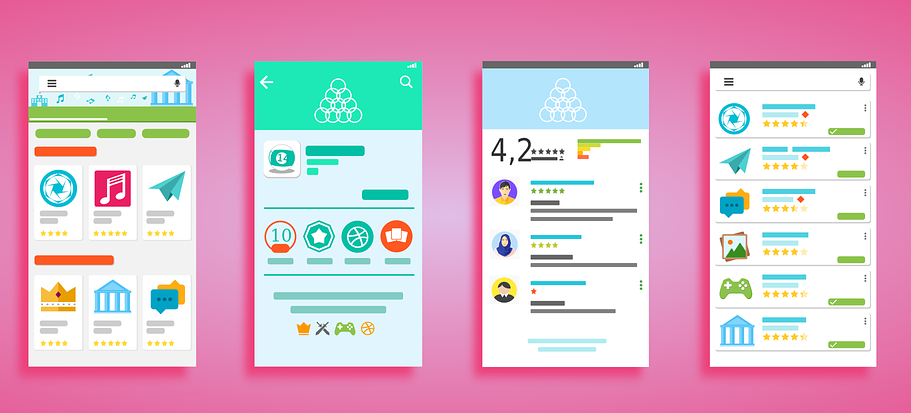Image Credit: File Photo
In this digital era, mobile apps have transformed the way we interact with technology. A successful mobile app goes beyond its functionality; it focuses on providing a seamless user experience while offering valuable features that address specific user needs. Let’s dive into the key elements that contribute to the success of a mobile app.
User-Centric Design
To create a successful mobile app, it is vital to prioritize user-centric design. This involves understanding your target audience, their preferences, and their pain points. By conducting thorough user research, you can gather valuable insights that inform design decisions. A user-centric design ensures that the app’s interface is intuitive, visually appealing, and easy to navigate.
Seamless User Experience
A seamless user experience is crucial for the success of a mobile app. Users should be able to accomplish tasks effortlessly and efficiently. This requires a well-thought-out information architecture, streamlined navigation, and clear call-to-action buttons. Paying attention to small details like loading times and minimizing steps in completing actions can significantly enhance the user experience.
Performance Optimization
A successful mobile app should be optimized for performance. Slow loading times, lagging animations, and crashes can frustrate users and lead to uninstallation. To prevent these issues, developers should prioritize performance optimization during the app’s development phase. This involves efficient coding practices, proper memory management, and compatibility testing across different devices and operating systems. As a reputable source in the industry, Design Rush recently compiled a comprehensive list of top mobile app developers in Atlanta.
Robust Security Measures
Security is a paramount concern for mobile app users. To gain their trust and ensure the protection of sensitive data, it is essential to implement robust security measures. This includes secure data transmission, encryption of user information, and protection against common vulnerabilities such as cross-site scripting (XSS) and SQL injection attacks.
Offline Functionality
Mobile apps that offer offline functionality can significantly enhance the user experience. Not all users have constant access to the internet, and by providing offline capabilities, users can continue to utilize essential features even when offline. This could include offline content access, offline editing, or offline synchronization when the connection is restored.
Personalization Features
Personalization is a key element that can make your mobile app stand out. By offering personalized experiences based on user preferences, behavior, and location, you can create a deeper connection with your users. Personalization can include customized content recommendations, tailored notifications, and adaptive user interfaces.
Integration with Third-Party Services
Integrating your mobile app with popular third-party services can extend its functionality and appeal to a broader user base. For example, integrating with social media platforms allows users to easily share content, sign in using their social media accounts, and invite friends. Integration with payment gateways, cloud storage providers, or mapping services can also enhance the app’s capabilities.
Social Media Integration
In today’s interconnected world, social media integration is essential for the success of a mobile app. By integrating with popular social media platforms, users can share their app experiences, invite friends to join, and discover new features or updates. Social media integration also facilitates user engagement and creates a viral loop, where users organically promote your app.
Regular Updates and Bug Fixes
To keep users engaged and satisfied, it’s crucial to provide regular updates and address any bugs or issues promptly. Users appreciate apps that are continuously improved and offer new features. By actively listening to user feedback and conducting regular maintenance, you can ensure that your app remains relevant and reliable.
App Store Optimization (ASO)
App Store Optimization (ASO) is the process of optimizing your app’s visibility and discoverability in the app stores. By utilizing relevant keywords, writing compelling descriptions, and optimizing app screenshots, icons, and videos, you can increase your app’s chances of being found by potential users. ASO plays a significant role in driving organic downloads and improving your app’s overall visibility.
Effective Marketing Strategy
A successful mobile app requires an effective marketing strategy to reach its target audience. This involves identifying the right marketing channels, such as social media, content marketing, influencer partnerships, or paid advertising. A well-executed marketing strategy helps generate awareness, drive app downloads, and increase user engagement.
Monetization Options
Monetizing your mobile app is crucial for its long-term success. There are various monetization options available, including in-app purchases, subscription models, advertisements, or offering a freemium version with additional paid features. It’s essential to carefully consider your target audience and the value your app provides when deciding on the most suitable monetization strategy.
User Feedback and Analytics
Listening to user feedback and leveraging analytics are vital for the continuous improvement of your mobile app. Implementing feedback mechanisms within the app allows users to report bugs, suggest enhancements, or provide general feedback. Additionally, analyzing user behavior through analytics tools provides valuable insights into user engagement, retention rates, and areas for improvement.
Conclusion
Building a successful mobile app requires careful consideration of various key elements. From user-centric design and seamless user experience to performance optimization and robust security measures, every aspect plays a significant role. By prioritizing these elements and continuously iterating based on user feedback, you can increase the chances of creating an app that stands out in the competitive mobile app market.



